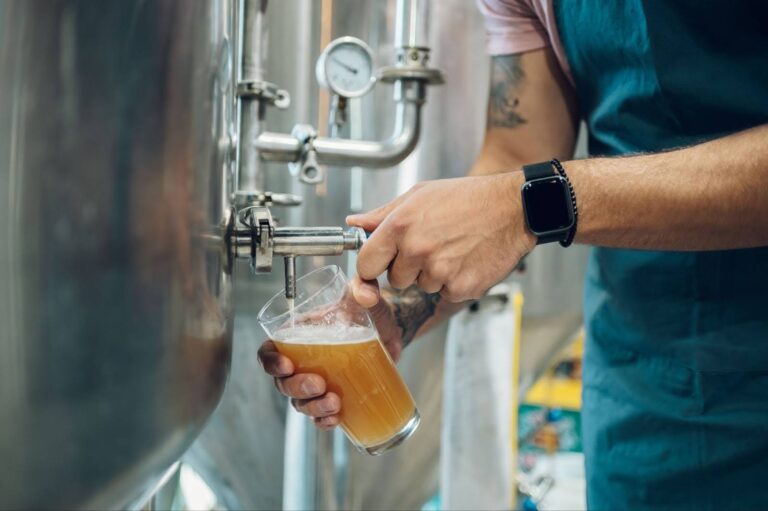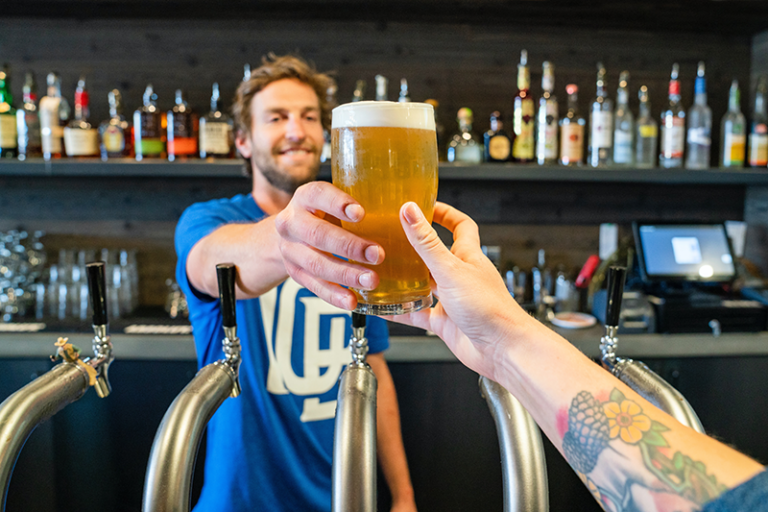Brewery Budgeting: Tips and Best Practices

Plan for profit, and work your way up.
Creating an annual budget is an essential task for brewery owners—it’s practically Business 101.
It involves determining your earnings, expenses, and ultimately, your profits.
While this may oversimplify the concept, it captures the essence of budgeting.
However, here at U-Nique Accounting, we approach brewery budgeting differently.
We call it the Bottom-Up Approach, and it’s a method that allows you to take into consideration the realities and real-life challenges that traditional budgets overlook.
In this blog, we’ll chat through the Bottom-Up Approach to budgeting for breweries, and give you our best tips that you can use in your own business.
Let’s get started.
Brewery Budgeting: The Bottom-Up Approach
The traditional way of doing things isn’t always the best way, and budgeting is an example of that.
While you may choose to continue with a traditional budgeting approach (revenue – expenses = profit), we prefer to use a “Bottom-Up” approach that focuses on profit and business value, rather than revenue.
In other words, plan for the profit you’ll need, not what you’ll make in sales.
Here’s a quick breakdown:
- Traditional Budgeting Method – Decide sales levels first and calculate the resulting net income
- Preferred Budgeting Method – Decide net income levels first and build up to the required sales levels
The Bottom-Up Approach is the superior method to forecasting as it sets a minimum level of profitability required to achieve company goals.
Need cash for capital investments? Working capital? Loan repayments? Retirement planning?
You need to plan for it, and this method will help you do just that and let you know if the business can support all your cash flow needs.

Quick Steps to The Bottom-Up Approach for Breweries
Follow these quick 5 steps to get started. If you need help, you can reach out to us here at any time. We’re here to help.
1. Review short and long-term factors
Take into consideration both professional and personal goals.
First, take a look at what’s happening in your brewery, short and long-term.
What do you need to factor into your finances?
- Are you growing rapidly? You may need a lump sum of cash to expand your team quickly.
- Are your working capital reserves depleted or below where it needs to be? What is needed to build this balance back up to a safe level
- Is your equipment in dire need of replacing? You may need to borrow and maintain ongoing repayments.
Secondly, take a look at your personal goals:
- Have you been underpaying yourself and need to increase your compensation structure?
- Have you saved enough to help cover college tuition for your family?
- Do you need to save more for retirement?
- Are you planning for an exit, and need to meet an ideal EBITDA figure?
List all of these, and other, factors out and determine what annual amounts the business cash flow needs to provide, before even reaching for the spreadsheet.
2. Determine profits required
Next, determine the profits you’ll need next year to generate the cash flow required for the factors above.
3. Build from the ‘bottom up’
Once you’ve determined your ideal net income, build ‘up’ the spreadsheet to determine the sales levels needed to achieve this.
Profit –> Operating Expenses –> COGS –> Sales
4. Analyze the numbers
How does it look? Based on your win rate and required sales pipeline/bidding activity, are your sales levels realistic for the trajectory of your business next year? If they are great! If not, then go to step #5.
5. Dial it in
If the sales numbers look too high, play with the business dials – gross profit and overhead.
What can you rein in?

How To Cut Out Expenses in Your Brewery Budget
There are a few things you can do to dial in your brewery expenses.
Dial #1: Overhead & Indirect Expenses
The first way is to look at overhead and other indirect expenses.
First start with your overhead. This dial has the biggest impact on your required sales level.
For example, if you have a gross margin of 40%, then a $1 savings in your operating expenses is equivalent to increasing your sales levels by $2.50.
Do a thorough review of your operating expenses and come up with a reduced value.
If your new adjusted required sales level is still unrealistic, then turn to the next cost-cutting exercise: your gross margin.
After scrubbing through and reducing your overhead expenses, take a look at your gross margin.
Dial #2: Gross Margin
This dial does not have the same impact as tweaking your overhead dial, but it still has a bigger impact than focusing on sales.
For example, if your current budgeted gross margin is $500,000 and your gross profit % is 40%, then your required sales level to achieve your $500,000 gross margin is $1,250,000 in sales.
If you were to improve your gross margin by 1% (increase from 40% to 41%), then your required sales level would drop from $1,250,000 down to $1,220,000.
Once you have adjusted and squeezed as much gross margin as possible, if your sales levels are still unrealistic, then as a last resort, turn to dial #3.
Dial #3: Business and Personal Goals
As a last resort, you can lower your net income goal – just keep in mind that this will affect your long-term planning.
While it’s always encouraged to aim high, this is one of the times you want to remain practical.
Be realistic with what your team can achieve. Review your business and personal goals and make some hard adjustments to your short and long-term plans.
We recommend working with an experienced brewery accountant before reaching this point to ensure you stay on track with your long-term goals.
Need More Help With Your Brewery Budget?
Whether you give the Bottom-Up Approach a shot or revert back to the traditional method (we won’t judge!), budgeting is always tricky.
Undershoot your cash requirements, and you may end up squeezing for cash throughout the entirety of next year.
Overshoot, and you may risk underachieving your long-term growth goals.
That’s why we always recommend getting help from an expert.
At U-Nique Accounting, we help brewery owners like you plan and forecast for business growth each year.
If you’d like help with budgeting, or another financial process within your growing business, feel free to book a 15-minute call with us anytime.
Simply use our calendar to start.
Until next time!



